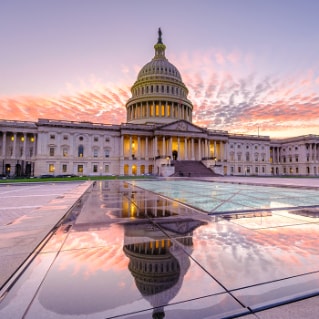Technology ethics at a crossroads has been saved

Perspectives
Technology ethics at a crossroads
Government can shape and use it in both familiar and innovative ways
The public sector today has a once-in-a-generation opportunity—and a unique responsibility—to promote tech practices that are trustworthy, ethical, and free of bias. But how can they go beyond dollars and regulations to make a long-lasting impact?
Getting technology “right”
Today, we have a once-in-a-generation chance to build technology ethics into our government policies and practices—to get technology right.
The public sector is more than one of the biggest consumers of technology. It also has a great deal of influence over it, from fueling innovation and research, to shaping acceptable use laws and regulations, to directing public funds to build a lasting foundation of leading best practices. That’s why we mustn’t overlook the vital role government can play in recognizing and steering advanced technology, such as AI, in the right direction by making sure it is applied and managed in ways that are trustworthy and ethical.
Promoting tech ethics in government
What are some ways federal agencies can promote trustworthy ethics in government? The best place to start is with a strong and lasting foundation of leading practices.
Here, we outline seven ways government entities can promote trustworthy and ethical technology through both traditional and more innovative means:
- Funding: Government is often a major or sole funder of pilot programs, research, private partnerships, task forces, academic programs, and more. As such, it has major influence in setting the tone for that work.
- Regulation: Lawmakers and agencies have broad opportunities to shape technology toward more trustworthy and ethical uses.
- Infrastructure: Government institutions are often the organizations best positioned for a national commitment to ethical technology—and can build a workforce that is attuned to recognizing, developing, and implementing it.
- Community education: Researchers in the private and public sectors—within academia and beyond it—have plenty to learn from each other. Government can propel greater collaboration across sectors.
- Roles of responsibility: Assigning localized ethics officers to help shape practices that conform to a government agency’s unique needs can help create accountability.
- Forging connections: Government has the convening power to bring thought leaders together to solve technology concerns across a wide range of disciplines.
- Delegation and accreditation: Even if the guardrails for future technologies don’t come from within government, government can still foster and oversee their development and application.
For tech to be equitable and trustworthy, it needs to be free from built-in racial and gender biases. It must also allow for accountability in financial record keeping, as well as curb the environmental impact of large data centers, and mitigate other unintended consequences. Government institutions are in a unique and urgent position to act now to address these challenges and should remain especially vigilant as technology continues to grow and influence our day-to-day lives.
The substantial potential for technology to have ethical implications is always present and will continue to evolve at the pace of innovation, ensuring there is always room for education, awareness, action, and oversight. As we move forward, government agencies would be remiss not to recognize this urgency, pay careful attention to discerning ethical tech’s nuances, and collaborate with other public organizations to make sure technology progresses ethically.

Recommendations
Ethical technology management with Salesforce’s Paula Goldman
Designing and applying ethical technology





